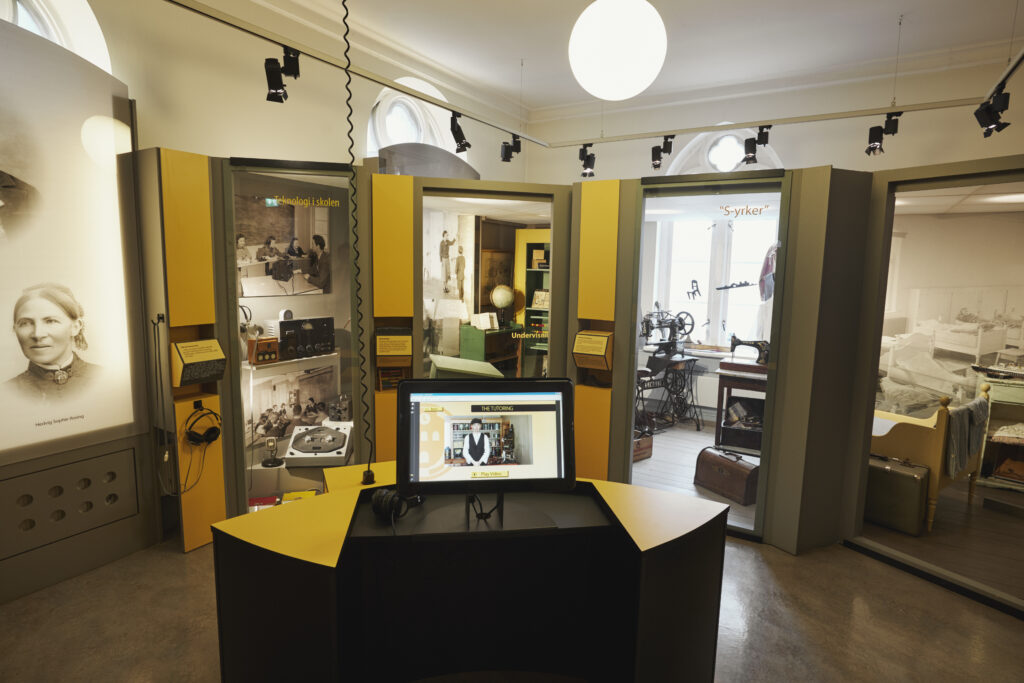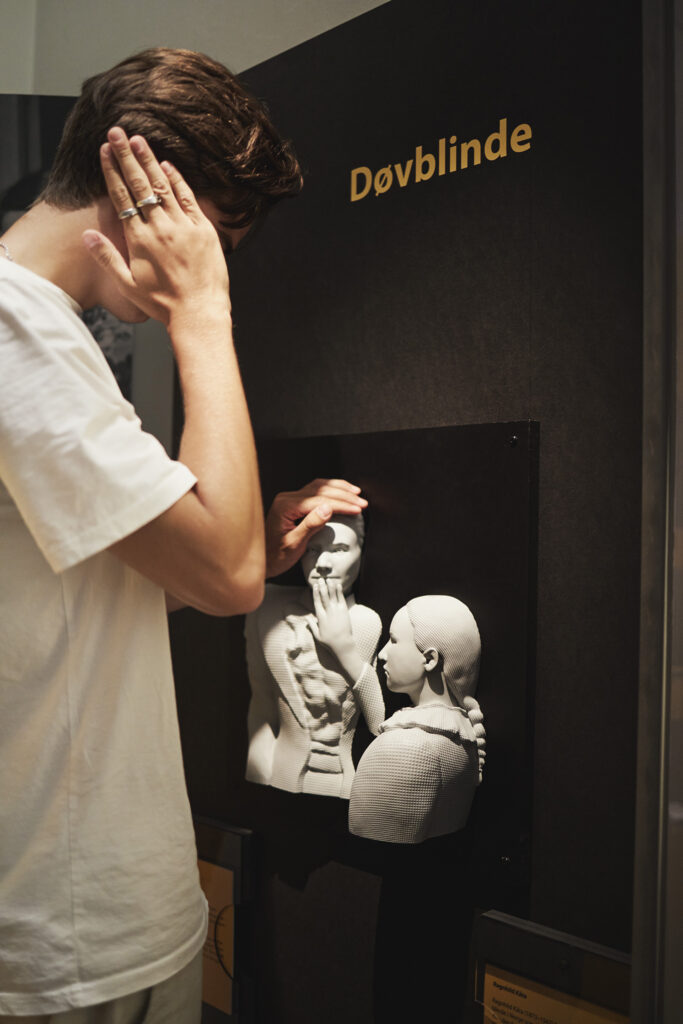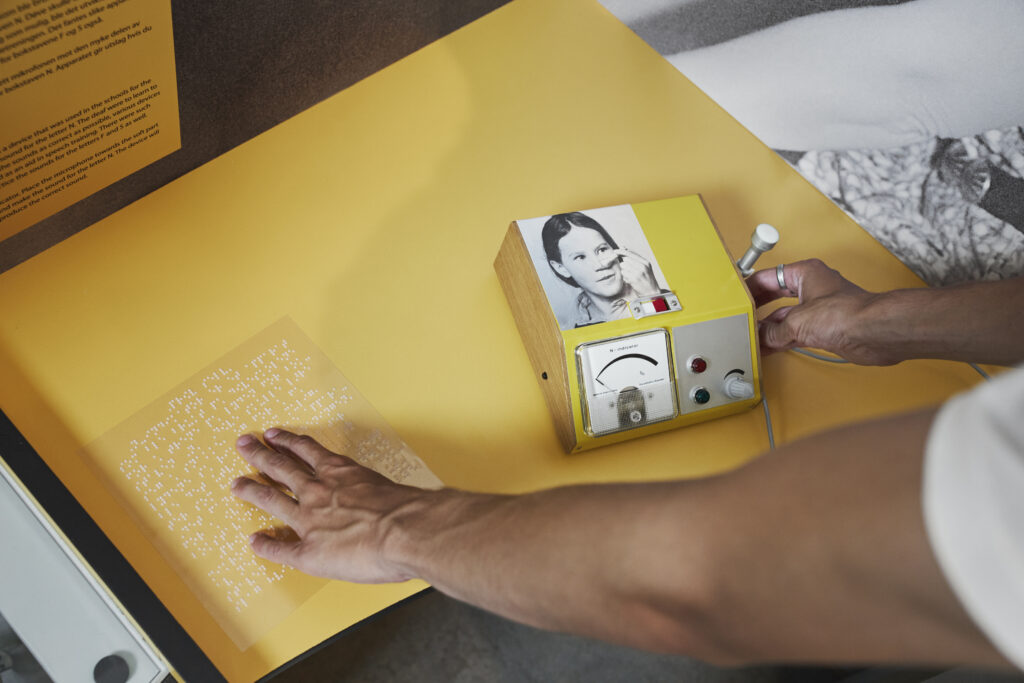Enjoy this article?
Most Museums Journal content is only available to members. Join the MA to get full access to the latest thinking and trends from across the sector, case studies and best practice advice.

Norway’s D/deaf community is deeply rooted in the historic port city of Trondheim. It was home to the country’s first D/deaf school, which opened in 1825, and now the same building houses Norsk Døvemuseum – the Norwegian Museum of Deaf History and Culture.
The museum, which opened in 2009, is dedicated to documenting D/deaf history and culture in Norway and houses a vast collection of artefacts and objects gathered since the early 1990s by a foundation set up to preserve the history of the D/deaf community in Trondheim.
The foundation, established by former teachers and students at the school, was created when Norway closed its special schools and integrated them into mainstream education. Over the decade, the collection increased as objects came from all over the country and by 2001 it needed a permanent home, funding and some historical and curatorial expertise.

To secure that, the foundation signed an agreement with Sverresborg Trøndelag Folk Museum, Norway’s third largest cultural history museum, to create the museum as it remains today in its home in the former school, which is also known as the Rødbygget or Red Building.
Designed by prominent Norwegian architect Christian Heinrich Grosch, who also designed the University of Oslo and Tromsø Cathedral, the neo-gothic building celebrates its 200th birthday in 2025.
The museum, which is open to visitors Thursday to Saturday and to school and professional groups throughout the week, has played a key role in conveying that Norway’s D/deaf community is a cultural and linguistic minority.
It aims to help people see deafness differently, to see the community as a linguistic minority with its own rights and to challenge any misconceptions. It does not document hearing impairment as a disability, standing instead as a symbol of empowerment for the community.
The exhibition is split across two rooms and is in two parts. The first looks at the history of the school, how it came to be established in the city, and how it became a symbol of linguistic unity for D/deaf people.
It also covers the Norwegian Association of the Deaf’s role in helping Norwegian Sign Language (NSL) to eventually gain recognition as a minority language under the country’s Language Law, which was implemented last year. This means it now has the same rights as the country’s many other minority languages.

The second room traces the history of related organisations, such as the Norwegian Association of the Deaf, and how developments in technology, such as hearing aids, have helped the community.
Both rooms feature objects from the collection, although much of it remains in storage, particularly as new artefacts are donated on a regular basis.
For Maria Antonie Sæther, curator at Sverresborg Trøndelag and the Museum of Deaf History and Culture, the collection is special because the objects are gathered by the community.
“They view them as important even if the artefacts are not necessarily unique alone and in themselves,” she says. “When you know the history and the contexts of the artefacts, they become special.”
She adds that what always makes an impression on her, and many visitors, is the speech training equipment. The spatelholder, for instance, was used at a time when sign language was perceived as an inferior way of teaching D/deaf students.
These instruments were used in speech training to shape students’ tongues to make them articulate words correctly. The Trondheim school gradually began teaching NSL from the 1960s.
The museum is supported by an active Friends group, who run a weekly cafe on a Saturday morning, providing coffee and waffles to visitors who come to connect and chat.
The venue is mindful of its signage and interpretation. Since 2009, it has focused on inclusivity, with everything available in text, sign language and braille. Other institutions have followed the museum’s lead in this area.
Sæther says that many visitors are themselves D/deaf, and most do not have a museum dedicated to the culture and history of the community in their own country.
Much of museum’s work is focused on the schools, student and professional groups that visit. For professional groups, Sæther sees the museum’s role as one of provoking new thinking, while for the schools it is about broadening communication.

It has two learning themes – one for high school-aged children, which challenges their views on communication, such as how to communicate in a non-verbal way. It looks at citizenship and being able to participate in society and how society has changed its views over time.
The second is for primary schools and features a rabbit character that leads the children to discover NSL and looks at how to build stories.
“Trondheim is the capital for D/deaf culture in Norway,” says Sæther. “The building and the museum is an important place for conserving history and culture for the community – its emphasis on NSL is key – but also as a meeting place to connect with others.”
Caroline Parry is a freelance writer
Most Museums Journal content is only available to members. Join the MA to get full access to the latest thinking and trends from across the sector, case studies and best practice advice.